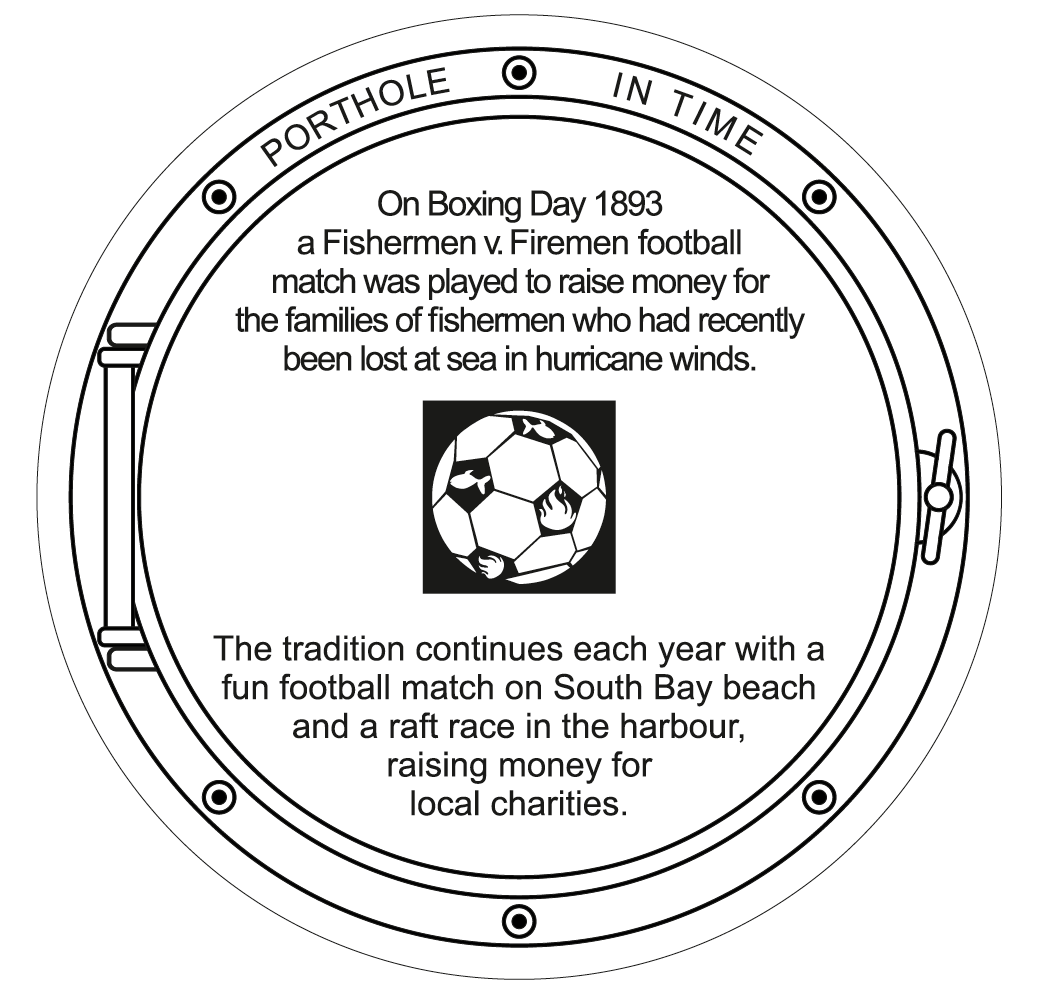
The Fishermen vs Firemen’s Football Match, held annually on the South Bay sands raises money for the Fishermen and Firemen’s Charity Fund. The tradition began in 1893, to provide for the widows and orphans of five men lost at sea while on board the fishing vessel Evelyn and Maud, which was caught in a terrible storm on the 17th of November. While the crew were never found, on 2nd December the boat’s lifebuoys washed up near Spurn Point, carrying the message: ‘ship going down. Sinking fast. Evelyn and Maud’.
Those lost were skipper William Mann of Princess Street, father and son Charles and Richard Whitaker of Batty Place and East Sandgate, Daniel Reeder of Dog and Duck Lane, and John Eaves, also of Batty Place. Each left behind a widow, one pregnant, and collectively 13 children.
To help support them, the boat’s owner Edmund Reynolds partnered with Councillor Joseph Hopwood and the Mayor George Beeforth to create the ‘Evelyn and Maud fund’. They attracted donations, particularly from local trawler owners and fishermen, but also held various fundraisers: street collections, concerts and, on Christmas Day, the first Fishermen vs Firemen football match, played between fishermen (skippers, mate and deckhands) and what were referred to as ‘firemen’ (stokers, engineers and cooks).
Around 15,000 people turned out to see the Firemen win 4-1 and over £9 was raised, enough to justify a repeat match the following year. Again money was raised for the Evelyn and Maud families, but, thereafter, other local causes were supported too.
The match initially took place on Christmas Day, but this was changed to Boxing Day in 1898, the same year the match was played on the beach for the first time, and some music and comedy was also added to the to the match. The tradition of fancy dress was started in 1903 by skipper Ben Crawford and a small child, both in ‘grotesque costume’. The event had found its modern day format. The match is not to be taken too seriously and often features a comedy element - in 1945 kicking the ball without wearing a top hat was recorded as a foul for the first time.